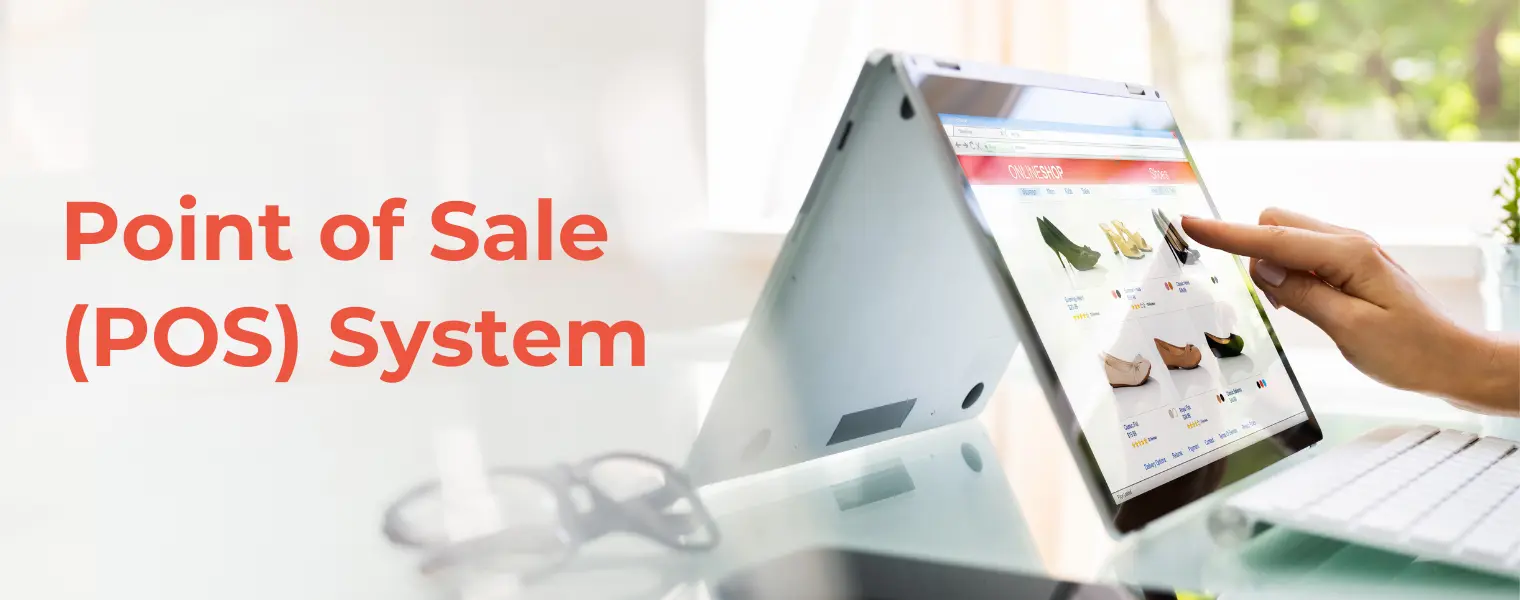
The time and place where a retail transaction is completed is referred to as the point of sale, or simply POS. It is used to collect money from customers in person. POS is a generic term that refers to a checkout counter that varies based on the store's system. Traditional POS is a system, not a solo application. POS system can be considered an endpoint of the purchasing process because every customer who purchases a service or solution in the store completes the transaction at the POS point. Customers are rung up at a point of sale, also known as a point of purchase. Customers are at the point of sale when they check out online, come up to your checkout counter, or select an item from your stand or booth. The technology and software that enable your firm to make those sales are known as your point-of-sale system. The point of sale (POS) is the time and location at which a retail transaction is completed. By managing inventory, processing payments, managing refunds and returns, and providing reports for analyzing profitability, POS Software assists retailers in growing their businesses. To put it another way, retailers sell their products, handle payments, and issue receipts. All of this is made easier by point-of-sale (POS) software. It will give you current inventory information, which item/product is in higher demand, and much more detailed statistics and analytics based on this transaction. POS software systems assist retail businesses in streamlining their daily operations. They become a way of programming a transaction's procedure and keeping track of vital sales data. A sophisticated point-of-sale system aids in the expansion of your consumer base and revenue. It provides flexibility and real-time insight into essential processes while enabling specific business requirements. POS software can give you effective control over areas like inventory management, sales performance, customer satisfaction, and overall business productivity, depending on the features you choose.
A point-of-sale (POS) system is a combination of hardware and software that allows you to check customers out, accept payments, and make transactions. POS software is always evolving to assist merchants in running their operations and providing better service to their customers. Instead, modern businesses are opting for mobile-friendly technologies that allow them to serve consumers and accept payments wherever they are. A point of sale system, sometimes known as a POS, is where your customers pay for products or services at your store. The POS system, as a major component, is where everything comes together, including customer management, inventory management, sales, and so on. POS software also aids in the management of store inventory, sales tracking, customer contact information and order history, and retail employee management. If you have both an online and a brick-and-mortar store, POS software can connect to your ecommerce platform, allowing you to manage your entire firm from a single back-office rather than two.
A point of sale system's billing and order processing functions are critical. It needs to be able to bill orders by scanning things and capturing various payment methods. It can make order invoices, reprint them, and email them to the final customer, as well as add discounts, customer information, additional notes, and the salesperson's name to an order.
A thorough report on sales results must be generated by the point of sale system. It ought to be able provide the hourly, daily, weekly, monthly, and yearly reports on revenues and outgoings so that merchants can rapidly assess their overall success. Annual number of buyers, sales trend forecasts, insights into wasted product expenditure, and stock management data are just a few of the features of a sophisticated POS reporting module.
The inventory management module of a POS system must always provide comprehensive visibility and responsibility at the store level. The system should show inventory by lot, SKU transaction history for 'in', 'out', and 'within' movements of any SKU, as well as incoming and outbound inventory. It should be able to make stock modifications, such as increasing or decreasing stock, while viewing inventory and recording the cause for the changes.
Accepting cross-channel returns and allowing refunds and replacements from any store location are just a few of the benefits of a POS returns management module. The system should make it simple to create multiple returns for the same sales order at different times. That should include details such as the reason for the return, the salesperson's name, and any further comments.
By recording customer data and purchase history, a point of sale system can help you retain consumers. This can be utilized to give your customers a more tailored experience. Client information is crucial for advertising since it can tell which clients are most likely to be interested in your goods.
Most consumers are startled to hear that a point-of-sale system may also be used to manage employees. However, a POS system's employee management feature can assist you in managing your staffing levels, employee hours, and sales performance, allowing you to track employee productivity. By connecting each transaction to an employee, you can keep track of their activity. This can help you distinguish between good and bad performers so you can take the required steps to boost their productivity.
Rather than using punch cards, you may now track customer loyalty incentives using your POS system. Gift card sales are increasing every year, so your POS system needs to be able to handle them as well.
DoFort POS software will help to make your business processes more organized. Our POS software comes with all the above features , however, depending on the type of business you have, you can also opt to include additional features to enable you maintain superior business management practices.
Welcome to DoFort !